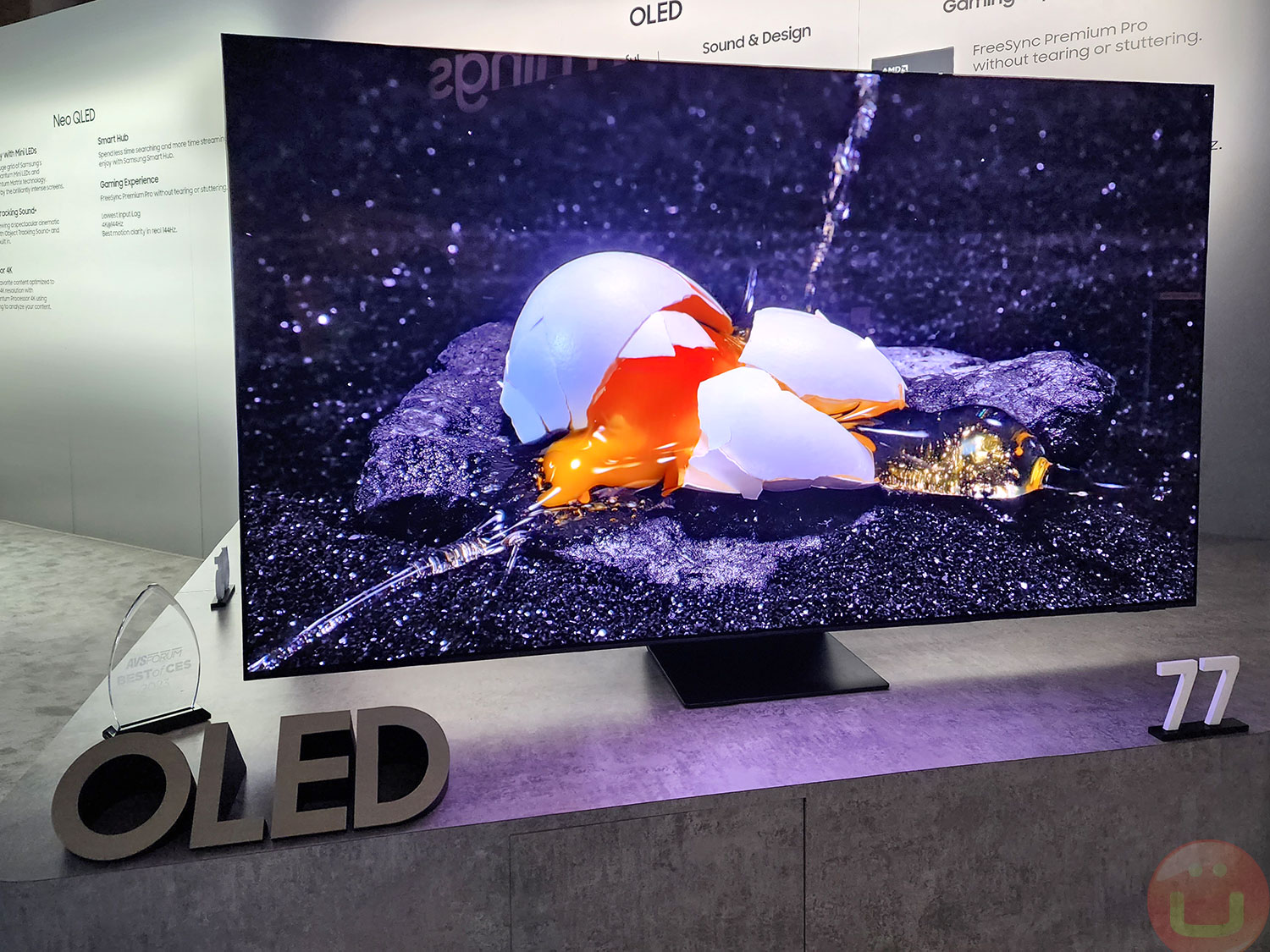Samsung S95C QD-OLED TV, Up To 77-Inches

We’ve always experienced an onslaught of new TV and TV technologies from Samsung during CES, and this time is no different. There are plenty of announcements, but we’ll guess that the most sought-after product for TV enthusiasts is the new Samsung S95C QD-OLED television, now available in sizes up to 77 inches.
Prospect buyers asked for that 77-inch diagonal since last year’s model’s size was maxed out at 65”. Samsung heard the requests, and you can prepare your wallets now. 77-inch is a sweet spot for size/price ratio, and that’s what I would go for if I upgraded my TV today.
Our co-founder Eliane Fiolet attended Samsung’s “First Look” CES media event and visually confirmed that the image quality of this quantum-dot (QD) OLED television was stellar, just as one would expect.
It’s hard to gauge without precise measurements or confirmed specifications, but the new S95C panel seems even brighter than the S95B. However, a tradeshow is hardly the place to experience nuanced differences, and we’ll wait for more information and independent reviews. It’s pretty uncommon to set the brightness to 100%, so while this is easy to talk about, it’s ultimately not a sway factor to us.
Samsung’s QD OLED has been building up its good image-quality reputation, and it is fair to remind people that in certain high-contrast conditions, QD OLED can yield better color accuracy (as intended by the content creator) than wRGB OLED panels such as LG’s.
A wRGB pixel pattern features a white sub-pixel in addition to the traditional RGB sub-pixels, hence the names. White pixels helped boost OLED panels’ peak brightness, often a weak spot against non-OLED technologies. However, w-pixels can only help so much before affecting color quality, as their brightness can start overwhelming the combined RGB luminosity output and slightly wash things out.
At the back of the TV, there’s a 70-Watt Dolby Atmos speaker system that aims to make the sound as “big” as the image. Compared to many internal TV sound systems, this seems like a terrific sound system.
Watching movies should be a fantastic experience, but gaming is too. Samsung’s panel supports 144Hz and is compatible with AMD’s FreeSync Premium Pro. And Samsung’s integrated Gaming Hub supports many game streaming partners, notably Xbox and GeForce Now.
What’s not to like? I didn’t find anything obvious to dislike. The price remains a mystery for now, but looking at the past, Samsung tends to keep stable pricing for established lines of products, so we’re not too worried about a price shock for now.
You May Also Like
Popular Right Now
- Ubergizmo’s Best Of K-Startup @ CES
- Intel Core i9-13900T Shows Extraordinary Efficiency In Early Benchmarks
- Ubergizmo’s Top 3 MIK Products @ CES 2023
- Three LG gram Laptops For 2023. The Lightest Got Even Lighter
- Ubergizmo's Best of CES 2023
- HAPTA, Computerized Makeup Applicator For People With Limited Hand Mobility
- EcoFlow Blade Robotic Lawn Mower and EcoFlow Glacier Portable Refrigerator
- Dell UltraSharp 43 4K USB-C Hub Monitor
- Snapdragon 8 Gen 2, Qualcomm’s Flagship SoC: Everything You Need To Know
- Ubergizmo's Best of ITS 2022
- Infinix Zero Ultra and Zero 20 Android Phones Show High Value
- Tesla Model X Moves in “Boat Mode” During Hurricane Ian
- Philips OLED+907 and OLED+937 TVs: Ultrabright and Loud
- Multo, Indoor Farm by Prêt à Pousser (Ready to Grow)
- Invoxia Smart Dog Collar, Intelligent Biometric Collar Delivers Canine E-Health
- Samsung Odyssey OLED G8 Gaming Monitor Launched at IFA